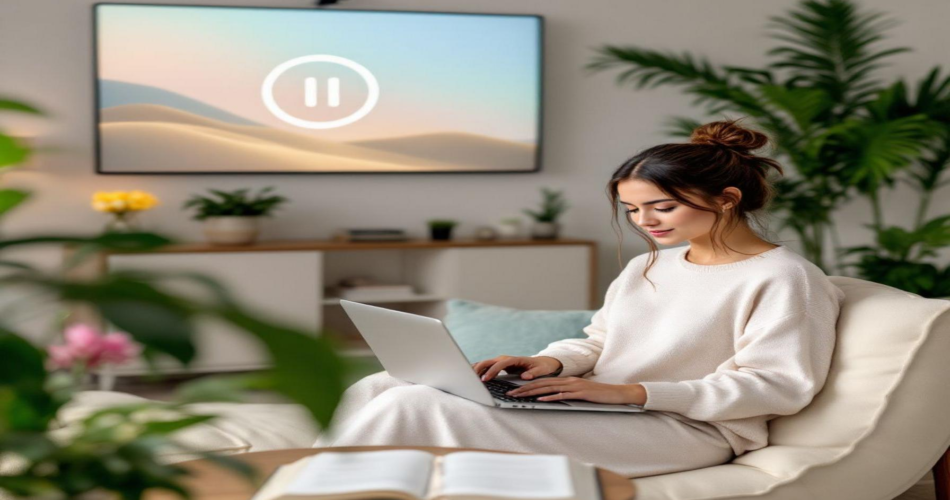In today’s hyperconnected world, mastering digital wellbeing is no longer optional—it’s essential. The constant influx of notifications, emails, and online interactions has transformed the way we live, work, and engage with others. While technology has many benefits, overuse can lead to cognitive fatigue, emotional burnout, and strained offline connections. By adopting effective digital wellbeing practices, healthy screen time habits, and creative digital detox ideas, you can regain control over your relationship with technology and lead a more balanced life. This article dives into actionable techniques to help you minimize digital dependency, boost productivity, and refresh your mind in this tech-driven era.
Table of Contents
- Understanding Digital Wellbeing Practices
- Building Healthy Screen Time Habits
- Digital Detox Ideas to Refresh Your Mind
- The Long-Term Effects of Digital Dependency
- Tips for Digital Minimalism in Daily Life
- FAQs
Understanding Digital Wellbeing Practices
A Brief History of Media Overload and Tech Dependency
The journey of media overload began long before smartphones arrived. From newspapers and radio to the internet and social media, our exposure to information has grown exponentially. While these advances make information accessible, they also contribute to a heightened state of constant connectivity, leading to digital fatigue. The concept of digital minimalism emerged as a countermeasure, encouraging intentional tech use to regain balance. Explore the history of digital minimalism here.
The Impact of Smartphones on Memory and Cognitive Health
Smartphones have become an extension of our minds, but at what cost? Studies, such as this one by Harvard, reveal how overreliance on tech tools for reminders displaces active memory use, potentially weakening short-term and long-term memory retention. By consciously using smartphones as supplements—not replacements—for cognitive functions, you can maintain your mental sharpness.
Building Healthy Screen Time Habits
Setting Limits for Productive Tech Use
Creating clear boundaries around tech use is essential for maintaining a balanced lifestyle. Children and teens, for instance, benefit from screen time limits of 1–2 hours daily, while adults can optimize their productivity by capping non-essential scrolling. Tools like screen time trackers can help monitor and manage usage. Check out our guide to screen time tracker apps for recommendations.
Incorporating Breaks to Avoid Digital Burnout
Taking regular breaks is a powerful strategy to combat digital burnout. Techniques like the Pomodoro method—25 minutes of focused work followed by a 5-minute rest—can improve concentration while reducing eye strain and fatigue. Integrating physical activity, even brief stretches, during breaks contributes to mindfulness and rejuvenation. The American Psychological Association underscores the necessity of proactive detachment from screens to preserve mental health.
Digital Detox Ideas to Refresh Your Mind
Weekend Challenges for Technology-Free Time
Challenge yourself to a weekend digital detox by embracing activities that take you away from screens. Spend time outdoors, host a family board game night, or prepare a meal together with devices switched off. These practices nurture relationships and encourage mindfulness.
The Rise of Tech-Alternative Hobbies
Rediscover hobbies that don’t involve screens. Whether it’s flipping through the pages of a physical book, learning to play a musical instrument, or keeping a handwritten journal, finding joy in offline activities fosters creativity and mindfulness. Explore 10 offline hobbies to enhance creativity for more ideas.
The Long-Term Effects of Digital Dependency
Cognitive Fatigue Trends from Binge-Scrolling
Binge-scrolling on apps like social media stimulates dopamine, the brain’s reward-seeking hormone. Over time, this consistent rush can lead to addiction-like tendencies, sapping focus and energy. Research, such as this study on dopamine’s role, highlights the dangers of unchecked app overuse.
Digital Dependency vs. Productivity
Excessive tech engagement often steals time away from meaningful work and relationships. Reframing technology as a productivity tool—by disabling distracting notifications and using apps intentionally—ensures tech remains an enabler, not a barrier, to success.
Tips for Digital Minimalism in Daily Life
Curating Your Digital Environment
A clutter-free digital environment sets the foundation for mental clarity. Start by decluttering your smartphone: delete unused apps, organize your folders, and disable non-essential notifications. Other strategies include turning off autoplay on streaming platforms and sticking to time-boxed sessions for entertainment. Learn more in our guide to decluttering your smartphone.
Building Sustainable Tech Habits Over Time
Digital minimalism takes consistent effort. Start small—such as designating one device-free hour daily—and gradually expand. Remember, the goal is progress over perfection. For inspiration, check out mindful tech usage tips by Psychology Today.
Frequently Asked Questions
What are the benefits of practicing digital wellbeing and healthy screen time habits?
Practicing digital wellbeing improves focus, productivity, and mental health. It also fosters meaningful offline connections and reduces the risk of cognitive fatigue.
How does digital detox help improve mental health and focus?
Stepping away from screens periodically helps your brain reset, reducing the stress associated with constant notifications and restoring your ability to concentrate.
What are the signs of digital dependency and how can you overcome it?
Signs include compulsively checking your phone, reduced productivity, and difficulty winding down before bed. Overcome it by setting boundaries, taking tech-free breaks, and encouraging offline activities.
How can I implement sustainable tech habits in a busy lifestyle?
Start small with manageable goals, like turning off unnecessary notifications or allocating one day a week for device-free time. Progress gradually to establish lasting habits.
Are digital detoxes suitable for children and teens?
Yes, digital detoxes greatly benefit children and teens by improving attention span and encouraging physical activity. Parents should model healthy habits to support these efforts.
Conclusion
Mastering digital wellbeing begins with being intentional about your tech habits. By practicing healthy screen time habits, trying digital detox activities, and curating a tech-minimal lifestyle, you can sharpen your focus, nurture relationships, and enhance your mental health. Start small—perhaps with a weekend-free from needless scrolling—and watch as your productivity and wellbeing improve. Take the first step toward a balanced life today.


